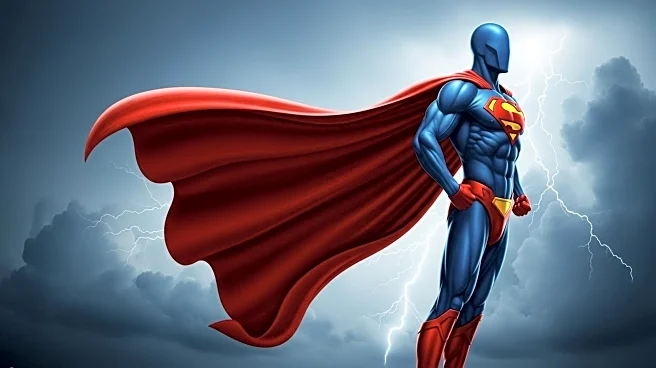What's Happening?
The preview for One-Punch Man Season 3 has sparked significant criticism from fans, who are disappointed with the animation quality and lack of action scenes. J.C.Staff, the studio responsible for the new season, released footage that primarily features characters in static positions, such as sitting or talking, without the dynamic fight sequences that the series is known for. This has led to concerns among fans about the direction and animation style under director Shinpei Nagai, who has a background in rom-com series and other projects. The absence of action scenes in the teaser has left fans worried about the upcoming season's ability to deliver the high-energy battles that are a hallmark of the series.
Why It's Important?
The backlash against the animation quality of One-Punch Man Season 3 is significant because it highlights the expectations fans have for the series, which gained popularity due to its sharp animation and fluid fight scenes in its first season. The criticism could impact the show's reception and viewership, especially if fans perceive the new season as a continuation of the less dynamic visuals seen in Season 2. This situation underscores the importance of maintaining high production standards in anime adaptations, as fan expectations can heavily influence a show's success and the studio's reputation.
What's Next?
As the release date for One-Punch Man Season 3 approaches, J.C.Staff and director Shinpei Nagai may face increased pressure to address fan concerns and improve the animation quality. The studio might consider releasing additional footage or making adjustments to the animation style to reassure fans. Additionally, the lack of announced streaming services for the new season could be influenced by the current backlash, potentially affecting licensing deals and distribution strategies.
Beyond the Headlines
The criticism of One-Punch Man Season 3's animation quality raises broader questions about the challenges faced by animation studios in balancing artistic vision with fan expectations. It also highlights the impact of social media on shaping public perception and the importance of effective communication between creators and audiences. The situation may prompt discussions within the industry about the role of directors with diverse backgrounds in leading high-profile projects and the potential benefits and drawbacks of such decisions.











